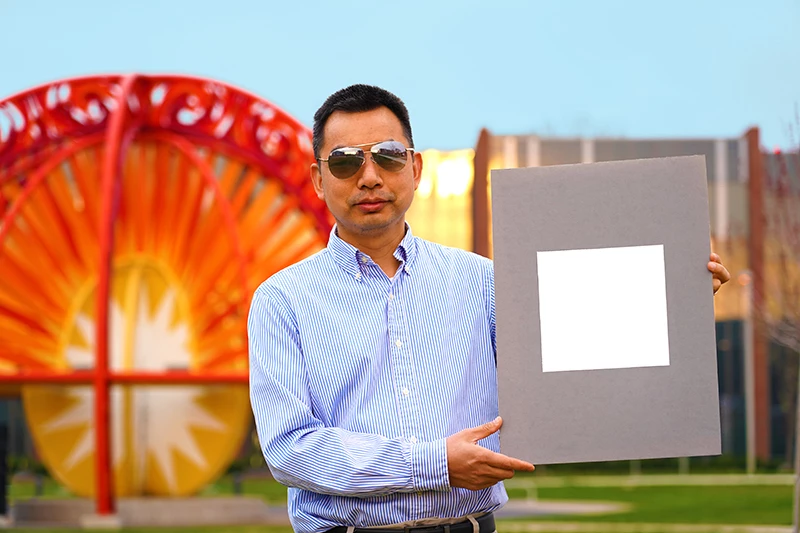The materials we coat our buildings with can have a big influence on their ability to reflect heat from the Sun and overall energy efficiency. Engineers at Purdue University have been at the cutting edge of this field of research for some time, and have just produced the whitest paint ever created, which they say reflects 98.1 percent of sunlight and can produce cooling effects that are on par with common air conditioners.
Upping the performance of white paints so that they reflect higher amounts of solar radiation is a common goal among researchers looking to keep living spaces cooler and lessen our reliance on air conditioners and other energy-intensive cooling systems. One NASA study from 2021 found that white coatings on New York City rooftops could reduce their peak temperatures by an average of 43 °F (24 °C), for example. We've also seen scientists cook up highly reflective paints made from glass, and others that incorporate Teflon to reflect up to 98 percent of incoming radiation.
The Purdue University scientists had recently shown off an ultra-white paint capable of reflecting 95.5 percent of sunlight. This material already far exceeds commercially available heat-reflecting paints that bounce away 80 to 90 percent of sunlight, but now the researchers are upping their game even further.
Their new ultra-white paint owes its excellent performance to a careful mix of particles made from barium sulfate, which is a chemical compound used in white photographic paper and cosmetics. These particles can make the paint very white and very reflective, but there is a line to be drawn in terms of compromising its performance, with too high a concentration causing the paint to peel off or break apart.
But by varying the size of the particles, the scientists can alter each one's ability to scatter light, with a wider range of particle sizes resulting in a paint that can scatter more of the light spectrum coming from the Sun. The team has now landed on just right recipe to produce the whitest paint ever made, and therefore the coolest paint on record.
“A high concentration of particles that are also different sizes gives the paint the broadest spectral scattering, which contributes to the highest reflectance,” says Joseph Peoples, a Purdue Ph.D. student in mechanical engineering.

The paint was put to the test outdoors where it was found to keep surfaces 19 °F (10.5 °C) cooler than their ambient surroundings at night time, and 8 °F (4.5 °C) cooler under strong sunlight during the middle of the day. In one outdoor test during the middle of winter in ambient temperatures of 43 °F (6.1 °C), the paint lowered the temperature of a surface by 18 °F (10 °C).
“If you were to use this paint to cover a roof area of about 1,000 square feet (93 sq m), we estimate that you could get a cooling power of 10 kilowatts," says Xiulin Ruan, a Purdue professor of mechanical engineering. "That’s more powerful than the central air conditioners used by most houses."
The research was published in the journal ACS Applied Materials & Interfaces.
Source: Purdue University




